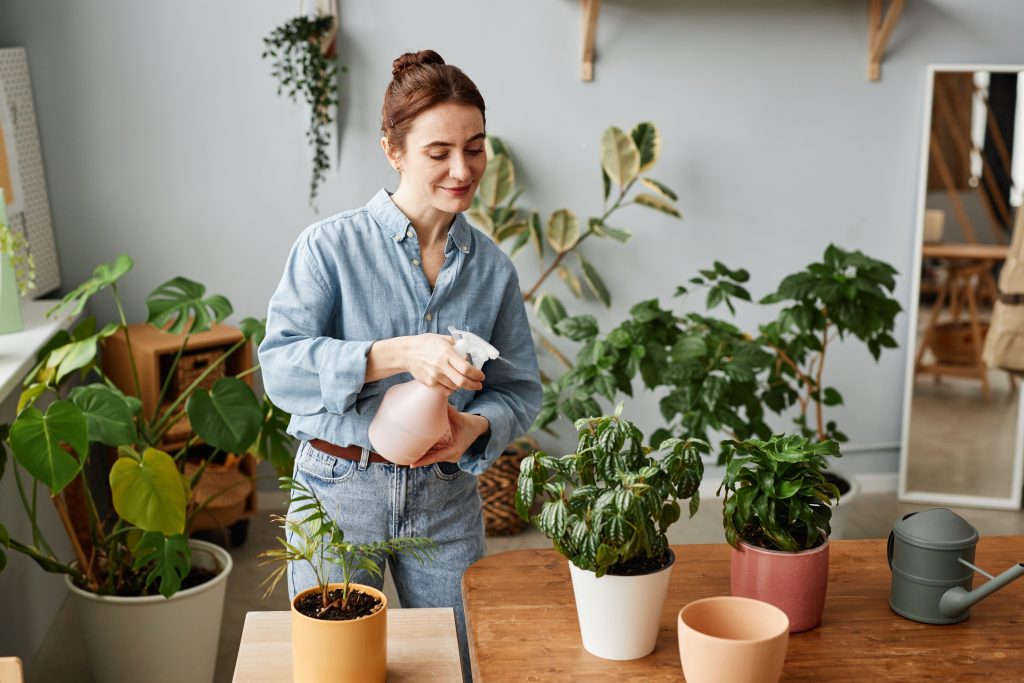Watering plants is an art as much as it is a science, requiring a keen understanding of the unique needs of each plant. Striking the right balance in watering is critical to plant health, as both overwatering and underwatering can lead to detrimental effects. It’s a fundamental aspect of plant care that all varieties of flora require water to thrive, regardless of their need for sunlight or self-sustaining qualities.
Tailoring watering practices to individual plant requirements is crucial, given that environmental factors such as light exposure dramatically influence a plant’s hydration needs. The task becomes more complex when considering plants’ varying needs in different growth stages. A more mature, established plant may demand more water than its younger counterpart. Gardeners adept in plant care adhere to specific guidelines, applying their horticultural knowledge to nurture indoor and outdoor plants effectively.
Monitor Climatic Conditions
- Winter: Plants often need less watering during this season as they enter a dormant phase with reduced daylight.
- Spring: Typically, watering once weekly is sufficient for potted plants, given the moderate weather.
- Late Spring & Summer: Increased temperatures may necessitate frequent watering due to faster evaporation. Some plants require hydration several times per week or even daily.
Adjust Water Levels
- Plant Size: Ensure larger plants receive more water due to greater need, while smaller plants require less.
- Pot Size: Reduce water volumes for large pots with small plants, as these containers retain significant moisture.
- Frequency:
- Small pots or hanging plants may need watering up to twice daily.
- Large pots typically require watering once per day.
Optimal Watering Times
One should water plants at dawn or dusk to maximise efficiency and minimise water loss due to evaporation. These timings are ideal since lower temperatures and less intense sunlight during these periods allow water to penetrate the soil and reach the roots before the heat of the day kicks in. This approach benefits plants by providing them with the necessary moisture to sustain themselves throughout the day.
Avoid Over-Watering
Ensuring that potted plants receive the right amount of moisture requires a balanced approach. When watering, ensure the plant gets enough to allow a slight excess to escape via the drainage openings at the base of the container. Containers lacking drainage provisions need a strategy to prevent root rot, such as a layer of gravel or a similar substance that captures excess moisture.
To prevent over-saturation:
- Water Quantity: Provide sufficient water so a trickle emerges from the bottom.
- Soil Check: Before adding more water, check if the soil’s surface retains moisture from the previous watering.
By adhering to these guidelines, one can maintain the health and vitality of their plants.
Irrigating the Root Zone
Watering properly involves directing moisture to the earth surrounding the plant base rather than the plant foliage. Moisture should target the ground to reach the roots effectively, as this is where plants absorb water. Wetting the foliage is counterproductive, as it may foster fungal infections and cause leaf damage. It’s pivotal to concentrate on hydrating the root area to promote healthy growth.
Be Patient
When observing outdoor potted plants droop during peak daytime heat, exercise caution before watering. This wilt is a natural defence, conserving root moisture. Assess the plant’s recovery post-sundown:
- Monitor: Check if they revive in more excellent evening conditions.
- Decide: Only provide water if wilting persists into the more relaxed evening.
- Regulate: Consistent moisture may be necessary if recovery is absent.
Keep Pots Dry
To ensure plant vitality, it’s essential to maintain a dry base for pots. Letting them remain in water leads to detrimental conditions like root rot. Utilise plant saucers to catch excess drips, but remember to drain these receptacles post-watering and following rainfall. Doing so preserves the moisture balance needed for healthy roots without over-saturation.


